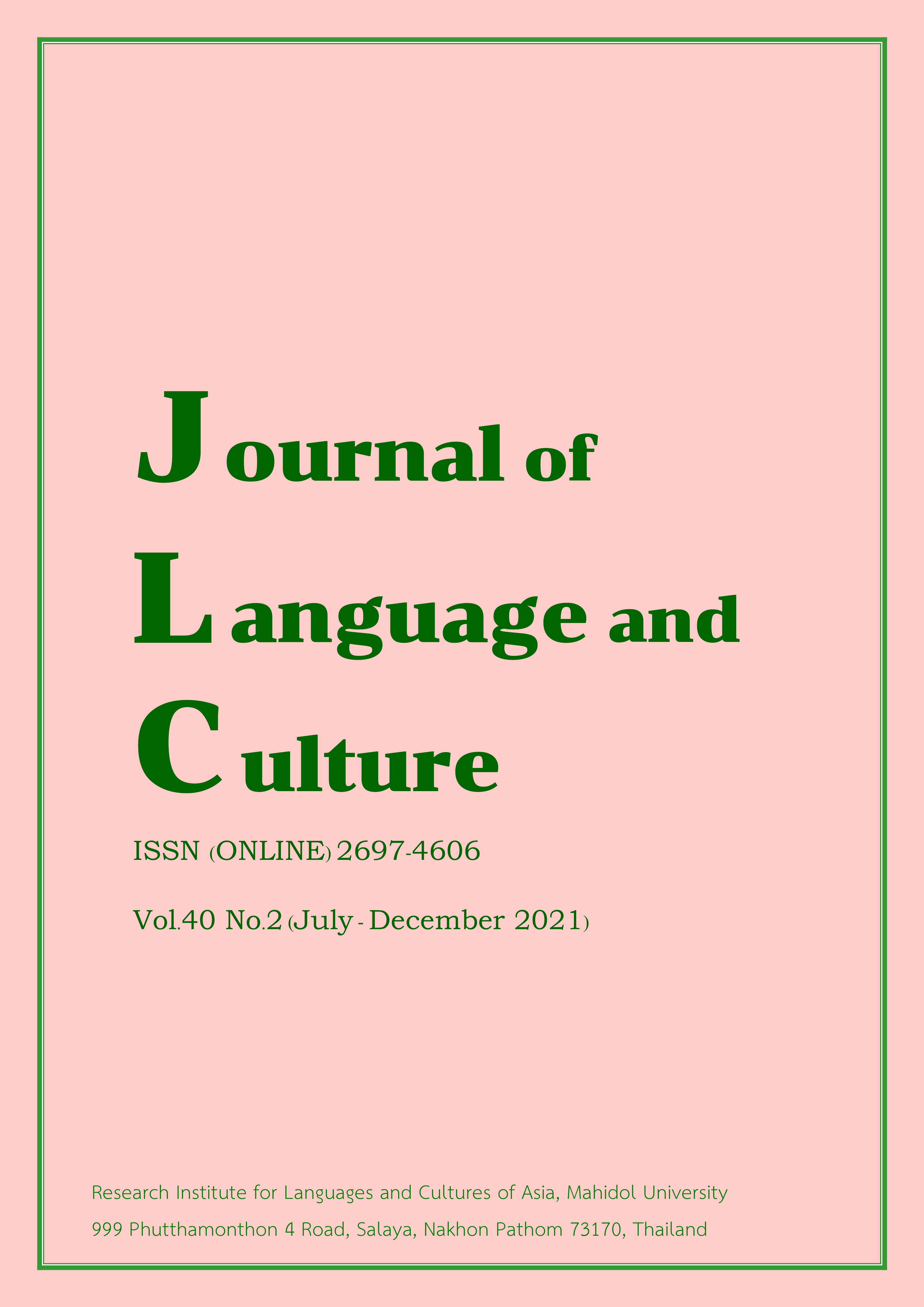Rhetorical move and multidimensional analyses of applied linguistics research abstracts
Main Article Content
Abstract
This research study aims to analyze number of words, number of sentences, rhetorical moves, number of sentences in each rhetorical move, rhetorical move structures, conventional rhetorical moves, co-occurring patterns of lexico-grammatical features with their communicative functions, and differences of co-occurring patterns of lexico-grammatical features used in each rhetorical move of applied linguistic research abstracts. The rhetorical move analysis reveals that the 200 applied linguistics research abstracts published in the 10 international academic journals comprise between 100 and 302 words with 3-15 sentences. They consist of four conventional rhetorical moves. Each rhetorical move contains 1-7 sentences. 27 rhetorical move structures were found in the applied linguistics abstracts. However, the most frequently used structure is the Purpose Method Results and Discussion (PMRD) structure. The multidimensional analysis reveals 4 co-occurring patterns of lexico-grammatical features with different communicative functions, each of which is used in rhetorical moves in the abstracts. The underlying results help support non-native Englishspeaking students and teachers and novice researchers to gain insight into the idiosyncrasies of applied linguistics research abstracts. The findings of this study provide empirical examples of linguistic patterns used in international scientific abstracts. This can be applied as a standard template for creating international scientific abstracts. The study also provides empirical evidences of linguistic patterns in international research abstracts.
Article Details
The articles featured in the Journal of Language and Culture (JLC) constitute academic works representing the viewpoints of the respective author(s). It is crucial to note that these opinions do not necessarily reflect those of the Editorial Board.
All articles published in JLC are released under the Creative Commons Attribution 4.0 International License (CC BY 4.0). This license grants permission for unrestricted use, distribution, and reproduction in any medium, provided proper credit is given to the original author(s) and the source.


